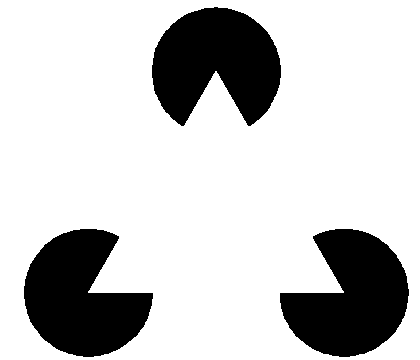- Gain insight into what the observer found interesting
- provide a clue as to how that person perceived whatever scene she or he was viewing
- Humans cannot attend to all things at once => what we look at is what we concentrate on
Early studies (over a century ago) focused on occular observations
Von Helmholz (1925): "Where"
visual attention tends to wander to new things
it can be consciously directed to peripheral objects without making eye movement to that object
eye movements reflect the will to inspect objects
eye movements provide evidence of overt attention
parafoveal: sth. is perceived (peripheral) and needs further inspection
"where" to look next
James (1981): "What"
attention a more internally overt mechanism to imagination, anticipation, or in general, thought
foveal: inspect sth. directly
"what" detail is present
Gibson (1941): "How"
What to do and "how" to react to visual attention
Broadbent (1958): "Selectve Filter"
Experiment: 7,2,3, on left ear and 9,4,5, on rith ear => 7,2,3,9,4,5, or 9,4,5,7,2,3,
information enters in parallel but is the selectively filtered to sensory channels
Deutsch and Deutsch (1963): "Importance Weightings"
I didn't quite get this one //TODO
Has to do sth with the Kanizsa illusion:

Even though there is no real triangle, our brain interpolates it.
Recognition of the entire scene is performed by a parallel one-step process (??)
How does a person view such an image? => eye tracking!!
Yarbus and Norton and Sparks (1967, 1971): "Scanpaths"
What is the point here?? //TODO
Posner (1980): "Spotlight"
it is possible to attend an object while maintaining gaze elsewhere
Treisman (1980): "Glue"
Attention provides the "glue" that integrates the seperated features in a particular location so that the conjunction (i.e. the object) is perceived as a unified whole.
Attention selects features from a master map of locations showing where all the feature boundaries are located, but nor what those features are. That is, the master map specifies where things are, but not what they are.
Kosslyn (1994): "Window"
"window" filters information, because there is more information in the visual buffer, than can be passed
"window" can be adjusted incrementally, i.e. the window is scalable
1.2 Visual Attention and Eye Movement
Dual attentative hypothesis (bottom-up model)
- Stimulus, e.g. an image, is first seen mostly in parallel through peripheral vision (low resolution) => interesting features "pop out", engaging or directing attention for further detailed inspection
- attention switches from the foveal location to the first region that attracted attention
- When the eyes have completed the movement, the fovea is directed at the region of interest => inspection at high resolution
- If only the visual stimulus drives attention, what types of features attract attention?
- If visual stimulus were solely responsible for attracting attention, would we ever need the capability of making valuntary movements?
- What is the link between attention and eye movement? Is attention always associated with foveally viewed portion of the visual image?
cf. Scanpaths: a picture is inspected differently, when giving different instructions => task-dependent scanpaths
for 3.)
humans can voluntarily dissociate attention from the foveal direction of gaze. E.g. astronomers do this to detect faint constallations of stars by looking "off the fovea" (periphery is much more sensitive to dim stimulus => faint stars are seen easier out of the corner of one's eye)
In eye tracking we assume, that the attention is linked to the foveal gaze direction, but we acknowledge that it may not always be so
=> for gaze interaction: a user might be looking at a certain object, but not from a foveal direction of gaze. How can this be detected? How can I solve this issue? Is this relevant for me at all? I have big buttons!! Question (TODO): What is the threshold for a human's off -oveal gaze? At what rate/angle/distance from the fovea is "seeing" still possible
1.3 Summary and Further Reading
- "where": visual selection of specific regions of interest from the entire visual field for detailed inspection. This selection is often carried out through the aid of peripheral vision.
- "what": detailed inspection of the spatial region through a perceptual channel limited in spatial extent
- the attentional "what" and "where" duality is relevant to eye tracking studies
- consensus view is that parallel pre-attentive stage acknowledges the presence of four basic features: color, size, orientation, and presence and/or direction of motion
- features likely to attract attentions are edges and corners but not plain surfaces

"threshold for a human's off -oveal gaze" is 1°-5° (visual angle)
ReplyDeletecf. Duchowski chapter 2